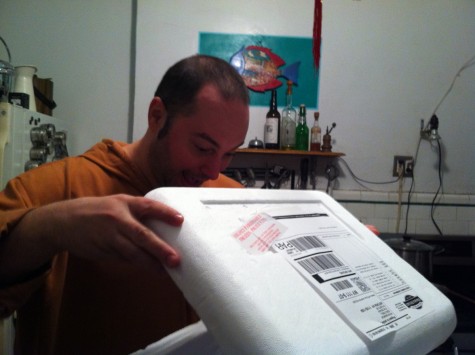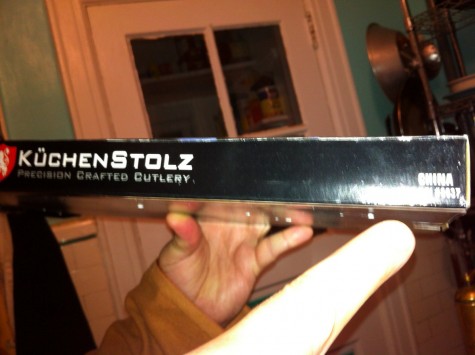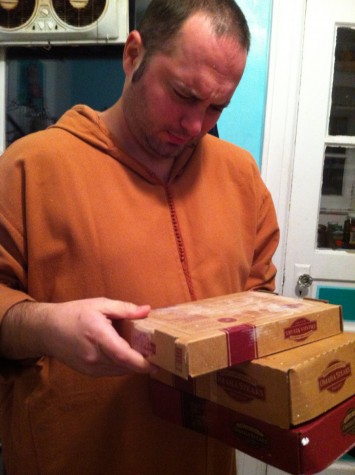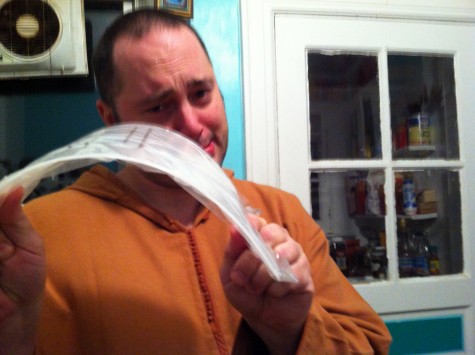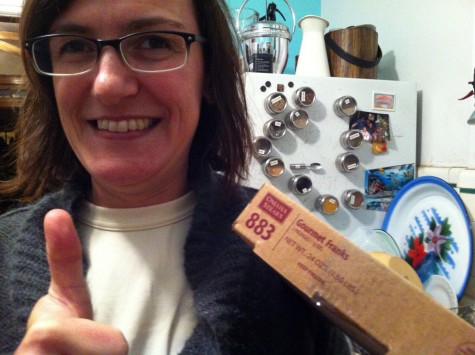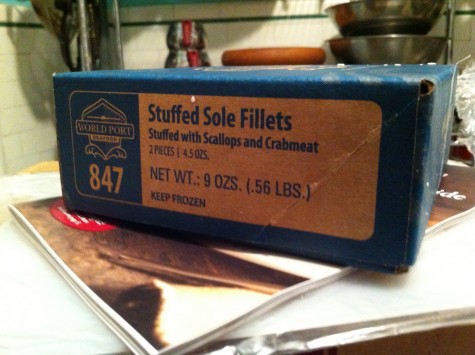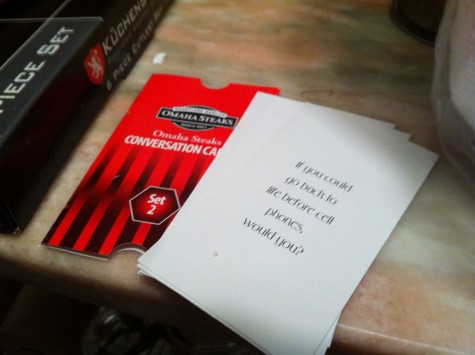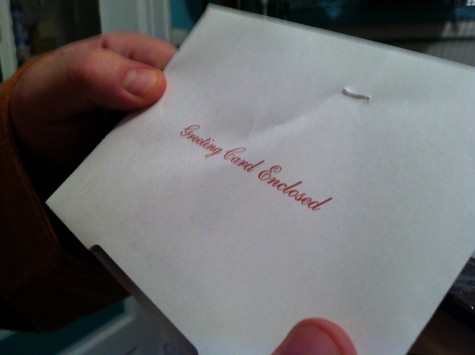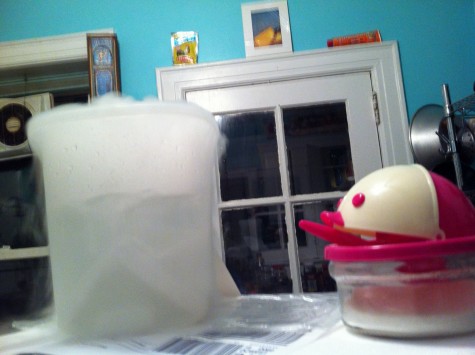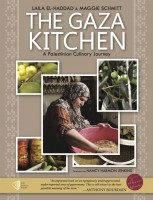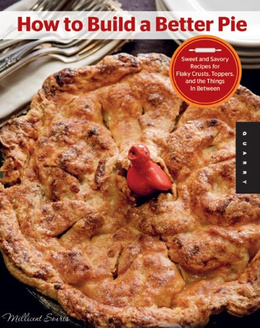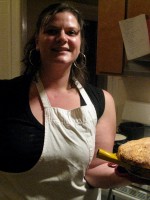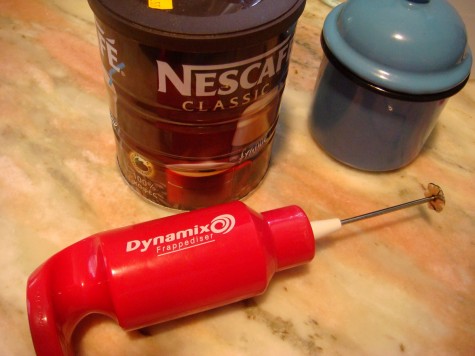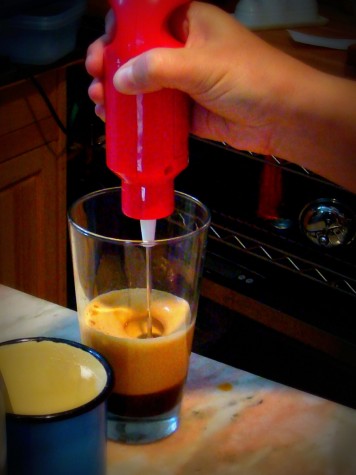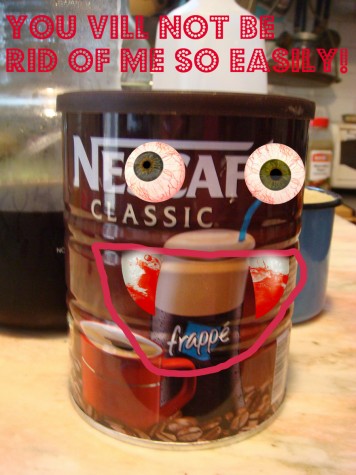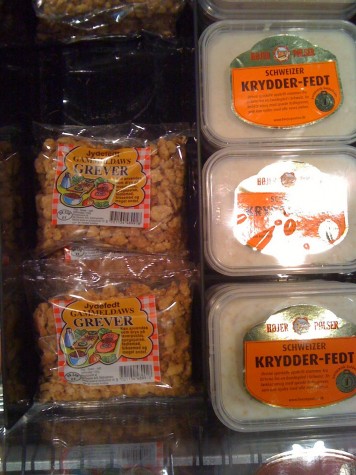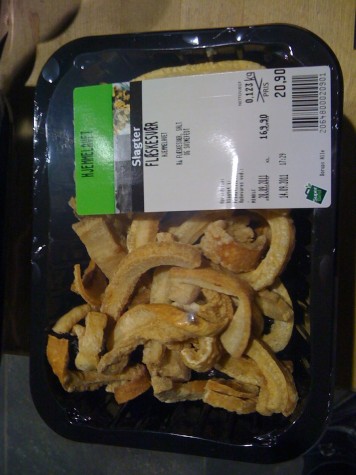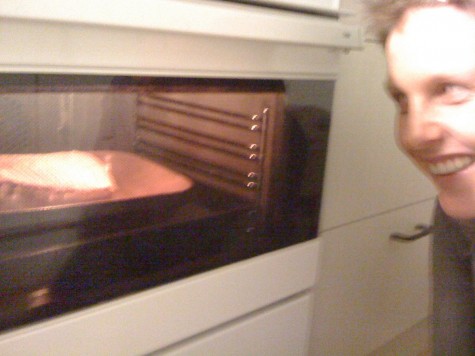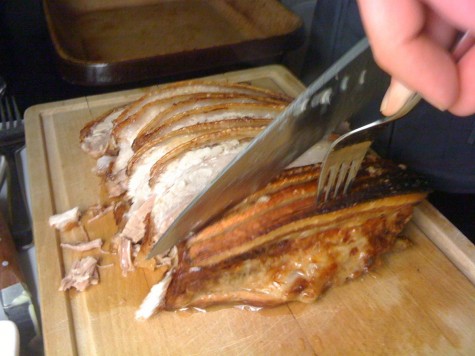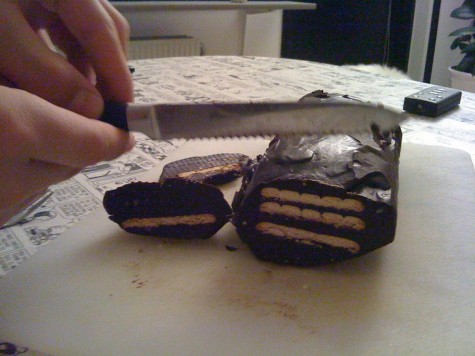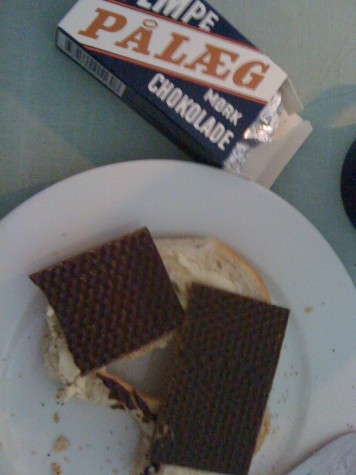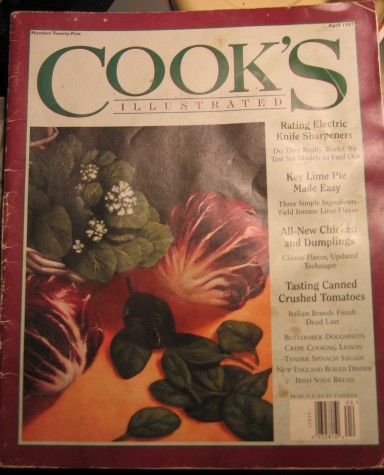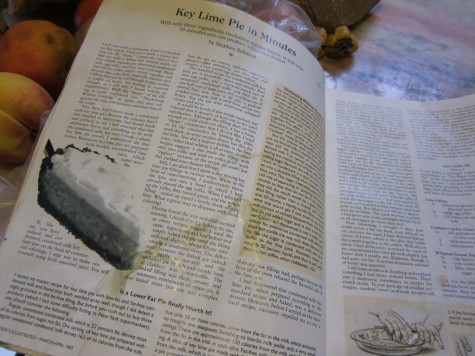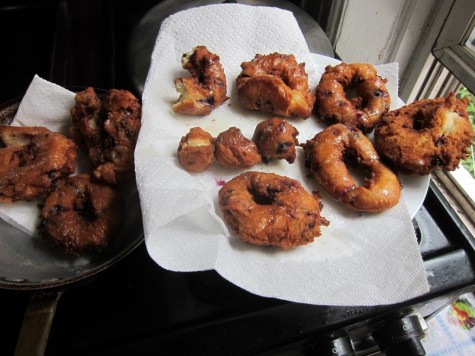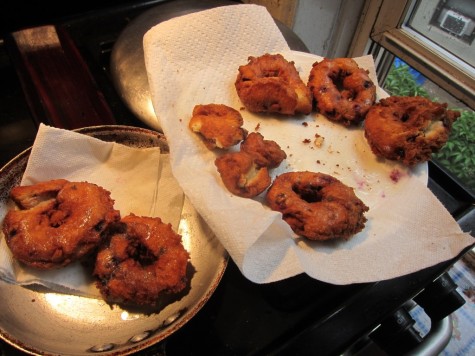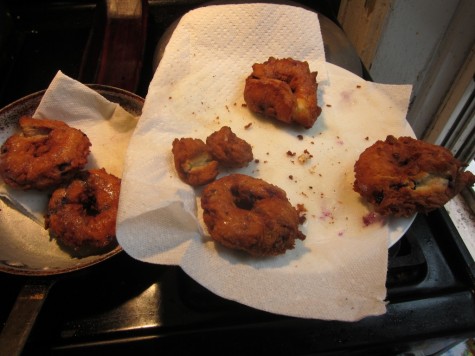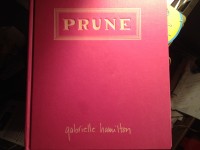
So of course I would say Gabrielle Hamilton’s cookbook, Prune, is brilliant in nearly every way. Because I am the very person around which its conceit is built–I, the hapless line cook who might very well ruin everything if I’m left to my own devices.
But it’s also great because, contrary to appearance, it’s a solid book for a home cook. Prune, after all, is one of those rare restaurants that combines the specialness of dining out with the immediacy and simple satisfaction of eating at home. Even if you haven’t eaten there (or worked there), I think it’s possible to appreciate this book and learn from it.
First of all, YES, it sucks, there is no index. I almost didn’t buy the book, out of spite, and vain hope that a second printing would include an index. Then I decided I’d just make one myself. Or at least a master list of recipes, organized a little bit better. HERE IS MY INDEX FILE. Download away! Pass it around! Doctor it up the way that makes sense to you and print it out and tape it in the back of your book, like I did. (Also, here is an online index of sorts; the bonus is that it’s easily searchable. **And OH LOOK! Now there’s a PDF version of that online index, on the Prune website.**)
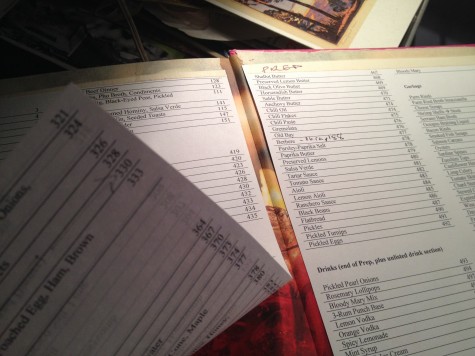
Aside from this, it’s a marvelously designed book. The “kitchen notebook” look may seem like a gimmick, but it’s not. That binder exists; I have worked from it. It is just as stained, scrawled on and taped up as the book looks. It’s also in drab old Times New Roman, just like that.
Also, the photos: Some are harsh or strange or blurry. But they’re real too, in a way that so many food photos aren’t today. Yes, the kitchen lights bounce off the stainless steel so much it strains the eyes. Yes, the range is greasy, and the steam from the roesti potatoes makes them look like some unfortunate shag carpeting. Yes, cardoons and beans look disgusting–but they taste great. That’s real life.
Which is funny, considering how cookbooks generally peddle in fantasy. Usually, they’re softer and fluffier fantasies: You host grand regional-Italian dinner parties, or you live at River Cottage and raise wholesome pigs and raspberry canes.
Prune presents a fantasy too, of course. But it’s a tougher one—you work in a restaurant. Not like in a reality show–but like in actual reality. You’re a lowly line cook, and you probably get paid $12 an hour, if you’re lucky (assuming wages have gone up in twelve years; I got $10). You don’t know half the words people are using, and you don’t know where to find the knife you need.
So, on first pass through this cookbook, give in to this fantasy. Don’t read thinking you’ll jump up and cook from it tonight. Read like you’ve just started a new job, and you are desperate to learn because you are in way over your head. (This book captures that feeling perfectly. By the time I got to the end, I was sweating and had a headache and wanted to throw the book down and run.) Read in fits and starts, grabbing what you can.
Close the book. Take a deep breath and be glad you don’t really have a job in a restaurant. That shit is hard work.
NOW you can go back and read it like a regular home cook, like you’re going to figure out what this book’s all about, and what you might cook from it.
But wait! Don’t start at the beginning. Read the “Family Meal” chapter, the last one. This is the actual introduction to the book, where Hamilton lays out the philosophy of her kitchen: thrift, creativity, clean presentation, the joy of feeding others. That’s what guides everything else in the book, and in the restaurant.
Next, give a quick skim through the “Prep Daily/Weekly” chapter. The sauces and spice mixes in here are the backbone of many of the recipes. Full recipes will cross-reference back here, and you want to have a passing familiarity with some of the more distinct combinations (Smoked Tomatoes, for instance, or Salsa Verde). This way, when you’re reading and deciding whether to cook a recipe that calls for one of these ingredients, you can imagine all the flavors in the dish.
Equally important, the “Prep Daily/Weekly” section gives you a little window into how a restaurant kitchen runs. Almost never is a dish cooked from scratch, but rather assembled from parts, many of which can be reconfigured.
I don’t normally think home cooks should mimic restaurant kitchens, because a lot of it is bullshit-fancy and inefficient. But Prune is not a bullshit-fancy restaurant–the first recipe in this book is canned sardines on Triscuits, after all, with strict instructions not to make them look too “restauranty.” And it is most definitely not inefficient. What the cookbook reveals is how a kitchen runs to keep cooking every day. You too, as a home cook, should aspire to have a system in place so you can cook every day without reinventing the wheel. Take the pan juices from one dish to spike another one; take the scraps from vegetables to bolster stock; heck, decorate with leek ends and hollow bones.
OK, NOW you can look at the recipes. It’s pretty much up to you from this point on. What you’re hungry for, what you feel up to tackling. Some dishes are easy; others are fiddly. Bite off what you can chew–and there’s plenty even for beginners to chew, especially the various stews and braises, and many of the vegetable preparations.
A lot of the reviews I’ve seen have wished this was a more user-friendly book. Really, it’s friendlier than it appears. It’s intense where it matters (Breton Butter Cake, my god). By contrast, where the instructions seem dangerously cavalier—those cases are almost always where if you wing it, you’ll probably be OK. Because in order to cook well, you, the home cook, need to do your own thing.
This isn’t the case in a restaurant, where consistency is what matters, and your job as a line cook is to perfectly reproduce the vision of the chef. But you don’t work in a restaurant, remember? Isn’t that a relief?
So this book is in fact nudging you, the non-professional, out into the world to cook better, gutsier food. Cooking is not a matter of quarter-teaspoons or simmering for precisely 12 minutes in precisely the right pan. Cooking is making do with what you have, and developing your own instinct for when vegetables will be just the right texture.
Rare for a restaurant cookbook, Prune is good at helping you develop that side of cooking. Discussing how long to cook eggs, GH warns that it can vary–are they cold from the fridge? In the roasted capon recipe, you get a great and thorough warning to keep an eye on the bird–sometimes your croutons can get too dry, or, if the bird is quite juicy, the crouton can get soggy. Paying attention to details like this and making adjustments as you go is how restaurant cooks make dishes consistently well, even with inconsistent ingredients. And this is how good home cooks succeed too. It is never due to setting a timer for exactly 48 minutes or whatever the book says.
Read the recipes for technique, and listen up when Hamilton hectors. Because what matters most of all is your attitude. Lazy, sloppy, making excuses–none of that is appreciated at Prune, or in any kitchen. “I understand the egregious lack of oven space here,” Hamilton writes in one recipe, “but let’s do things right anyway.” In that sentence is a pep talk for anyone with a too-small kitchen.
Thrift is critical too–and always key for a home cook. “Don’t throw your mistakes away” is a tip that comes along with a way to salvage cream past its sell-by date. It’s encouraging you not just to rethink your blunders, but to value ingredients. “This is how we show our respect for the people who made this,” Gabrielle once told me as she wiped a mustard jar clean with a spatula. The natural outgrowth of that attitude is the entire “Garbage” chapter, a beautiful testament to the nobility of scraps.
In this way–that is, in the way of putting you in the right mindset for running a good kitchen–the Prune cookbook is very helpful. You want the kind of rustic, tastes-like-the-home-you-never-had food that Prune serves? It’s all in here, and you can cook it.
GH’s only-in-this-restaurant-kitchen instructions actually strike me as a perverse reality check. This is how we do it, she’s saying, and you’ll never be able to do it quite this way. But that’s OK—we all know the restaurant thing is a conceit, a bit of fiction. The important, real thing is that you get in the kitchen and make it. What matters is that you care enough to make it good.
If you doubt this last part, go back and read the “Family Meal” section again.
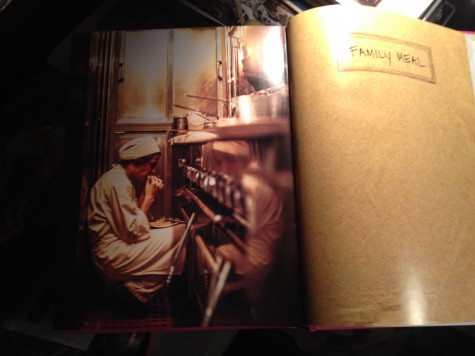
Bonus glossary!
Here’s some lingo that caught my eye, and some of the more cryptic admonitions. Feel free to ask about others in the comments.
Balsamic = In the “Family Meal” section, GH says never to use this. That’s because the good stuff is insanely expensive and should not be tossed on a salad. (There’s also crappy balsamic vinegar, the cheap stuff you get at the supermarket. Presumably you could use this in a Prune family meal, but let’s be honest, there is something a bit cheesy about a balsamic vinaigrette. Salad should not be sweet. I wrote about the various grades of balsamic vinegar here.)
Blended oil/”our oil blend” = EVOO cut with vegetable oil, 70% EVOO/30% veg, for applications where EVOO would be overwhelming or a waste. (It’s explained on p463, but of course, without the index, you have no way of knowing this until you happen across it.)
Football = A plate shaped like a…football. Regular people would probably call it an oval. Of course, how you plate things in your own home is entirely up to you.
Half sheet = A full sheet pan is the right size to fit in one those rolling bakery racks; it is too big to fit in your home oven. A half sheet pan is, obviously, half that size and will fit in your home oven. (It is somewhat bigger than a cookie sheet you’d pick up in a grocery store, though.) A Silpat (nonstick mat) fits a half sheet pan perfectly.
Hotel pan = A deep rectangular stainless pan, the kind you see in hotel buffet lines, that slots into a counter with a steam bath underneath. Of course you won’t have one at home, and you won’t need one because you’re cooking smaller quantities. A flat-bottomed pot with straight, medium-heights sides will do. Also, there are third pans and half pans. See pics here. You don’t need any of them.
Quenelle = What’s wrong with a quenelle? I’ll tell you what’s wrong with a quenelle: It’s a bullshit high-toned unnatural shape for a scoop of ice cream. Would you make a quenelle at home? No, of course you would not. Plus, it requires the garde manger person to fiddle around with two damned spoons, when she could be doing something a lot more productive with her limited time and space.
Sacramento tomato juice = The internet swears this is the proper brand for Bloody Marys. (I personally have not developed my palate much in this respect; I have no idea.) The reason GH stresses this in the book is because she’s letting you know why her Bloody Marys taste so good. Should you not make a Bloody Mary from this book if you can’t find Sacramento tomato juice? Of course not!
Sally/salamander = When God makes open-face cheese sandwiches, he uses a sally and it’s all oozy and blistered brown in about six seconds. When you, mere mortal, want to broil something, you will have to use the thing in the top of your oven, or the broil setting in your toaster oven. It’s wimpy, but what’re you gonna do? (On the plus side, you will probably not inadvertently scorch your meal by turning your back for a second too long, nor will you singe all the hair off the back of your hand from reaching into your toaster oven, as you would in a sally.)
Wax = Jargon peculiar to Prune, I think, for a freebie given to a good or familiar guest. (I think it had something to do with bikini waxes, and zipping that charge right off the bill…maybe?)
